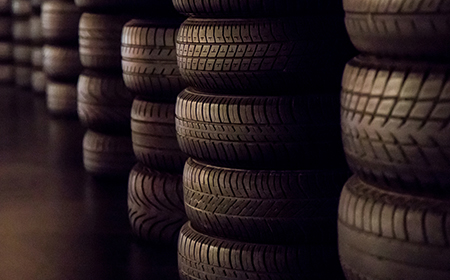Hydroplaning happens when tires cannot displace the water under the tread fast enough. The tires lose direct contact with the road and skid or slide across a thin layer of water. This creates a potentially dangerous situation as the driver momentarily loses the ability to steer, brake or otherwise control the vehicle.
Tires have grooves in the tread pattern to channel water from beneath the tire. Wide open, deep circumferential grooves are the most efficient at expelling water quickly. Another effective tread design are grooves that are like chevrons pointed in the direction of rotation. The V shape is very common on directional high performance tires. The grooves have a direct channel to the outside of even a wide tire, while still providing traction and performance on dry roads.
No matter what style of tread pattern, very worn tires means the grooves have less space to funnel water out from under the tread. For this reason, worn tires have a greater tendency to hydroplane, even in light rain conditions.
Here are some important tips for wet weather driving and to avoid hydroplaning:
- Keep your tires properly inflated
- Rotate and replace tires when necessary
- Slow down when roads are wet: the faster you drive, the harder it is for your tires to displace the water under the tread
- Avoid deep puddles and standing water if possible.
- Avoid driving in outer lanes where water tends to accumulate
- Turn off cruise control in the rain or in wet conditions
- Avoid braking, and steer in the direction of the slide when you feel the tires begin to lose contact with the road.
